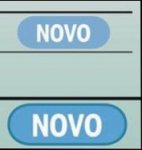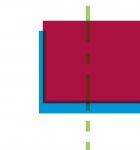I am working with a new print company to develop carton designs. We have received the proofs back with some very minor concerns.
We tentatively have approved them, however I wanted to get some feedback to understand how an Illustrator/EPS file could be placed into a RIP/Prepress software and outputted this way. In short is this specific to our files we have supplied or is this an error with pre-press software/prepress team.
I have the following examples:
1) Color Overlap blends together
We have a color bar for the main brand and a shadow color band underneath. The PDF shows the top color and overlaps the shadow color, no transparency added in. However within their print proof the overlap between the colors blend together.
2) Outline on shapes
We have oval shapes as single color, however when they returned a proof there was a border around the oval.
3) "Text" Images outlined
One of our brand elements that contains text should be 100% black. On one deliverable it is correct, but on another it showcase black outlined image with a lighter % of black within outline (muddy brown comes to mind).
Any feedback on why this could be occurring would be helpful.
We tentatively have approved them, however I wanted to get some feedback to understand how an Illustrator/EPS file could be placed into a RIP/Prepress software and outputted this way. In short is this specific to our files we have supplied or is this an error with pre-press software/prepress team.
I have the following examples:
1) Color Overlap blends together
We have a color bar for the main brand and a shadow color band underneath. The PDF shows the top color and overlaps the shadow color, no transparency added in. However within their print proof the overlap between the colors blend together.
2) Outline on shapes
We have oval shapes as single color, however when they returned a proof there was a border around the oval.
3) "Text" Images outlined
One of our brand elements that contains text should be 100% black. On one deliverable it is correct, but on another it showcase black outlined image with a lighter % of black within outline (muddy brown comes to mind).
Any feedback on why this could be occurring would be helpful.
















